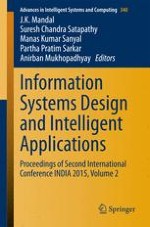2015 | OriginalPaper | Buchkapitel
EMD Based Features for Discrimination of Focal and Non-focal EEG Signals
verfasst von : Manish Gehlot, Yogit Kumar, Harshita Meena, Varun Bajaj, Anil Kumar
Erschienen in: Information Systems Design and Intelligent Applications
Verlag: Springer India
Aktivieren Sie unsere intelligente Suche, um passende Fachinhalte oder Patente zu finden.
Wählen Sie Textabschnitte aus um mit Künstlicher Intelligenz passenden Patente zu finden. powered by
Markieren Sie Textabschnitte, um KI-gestützt weitere passende Inhalte zu finden. powered by
